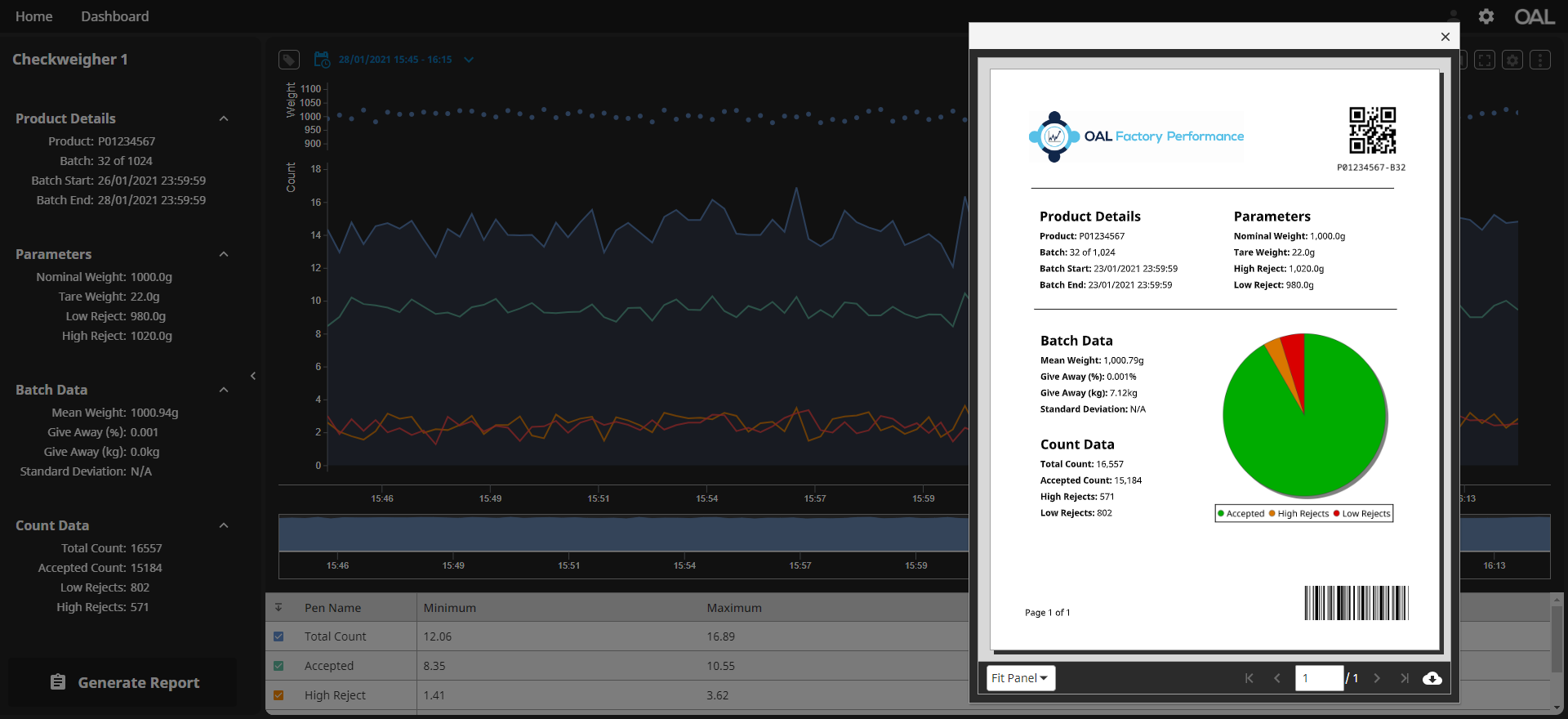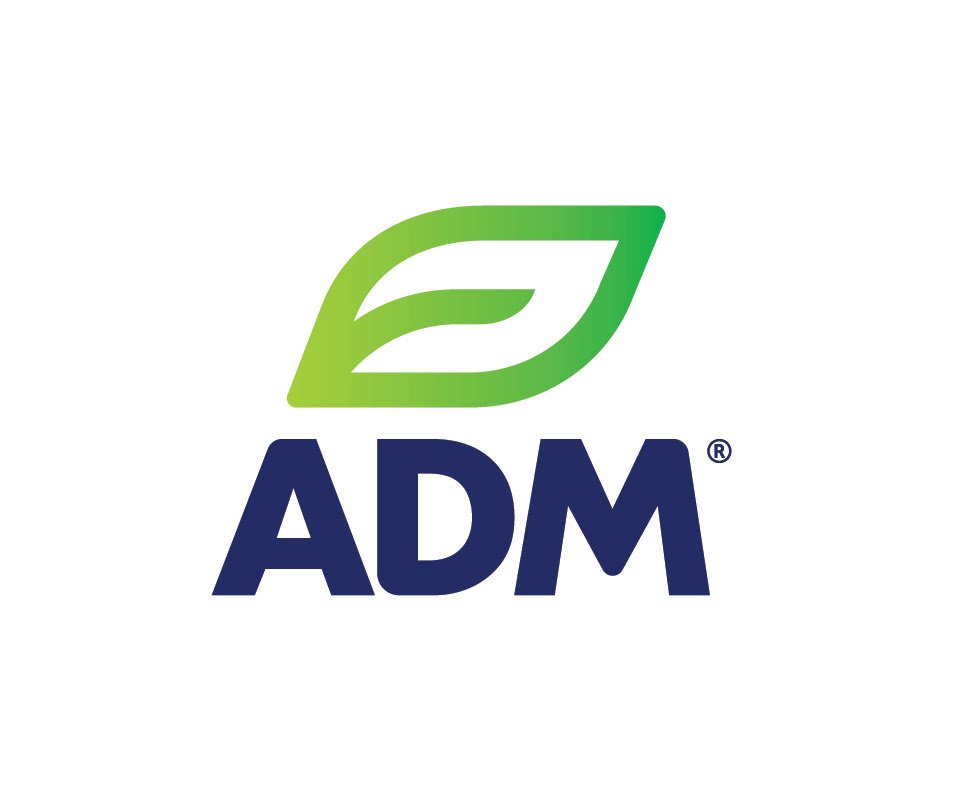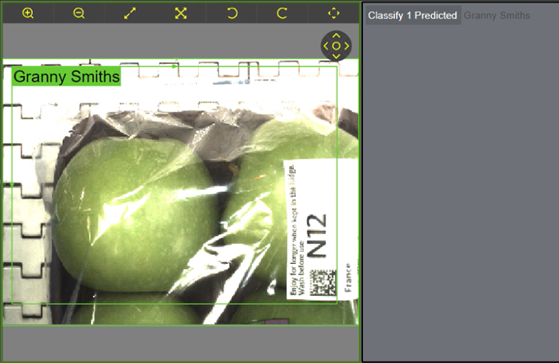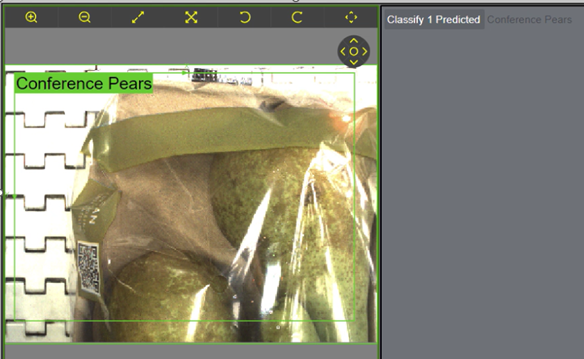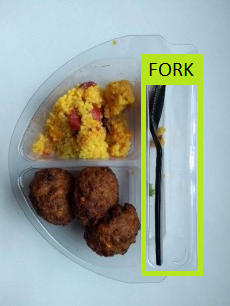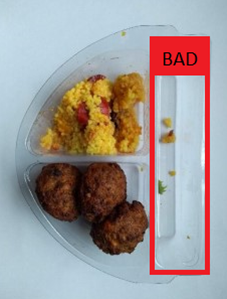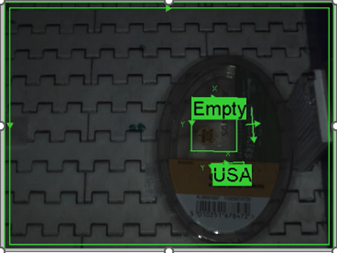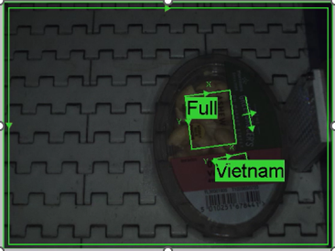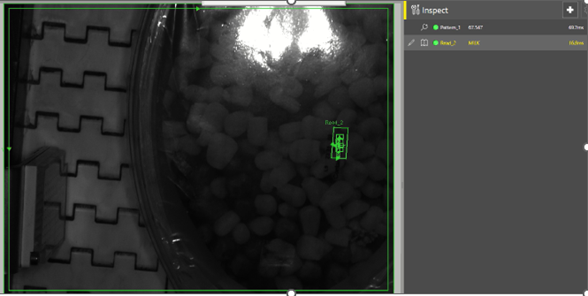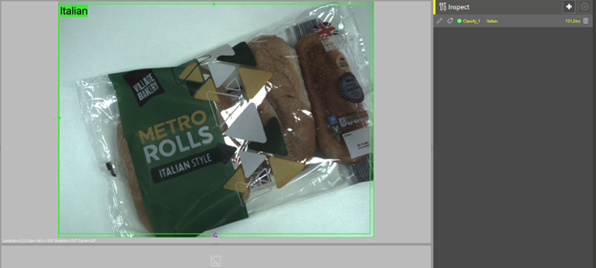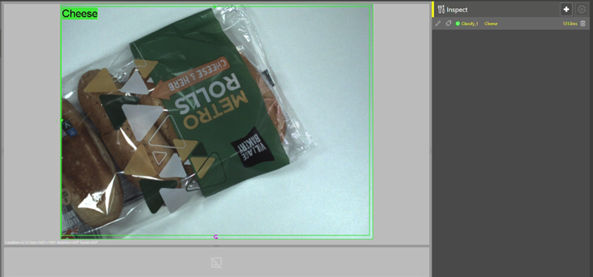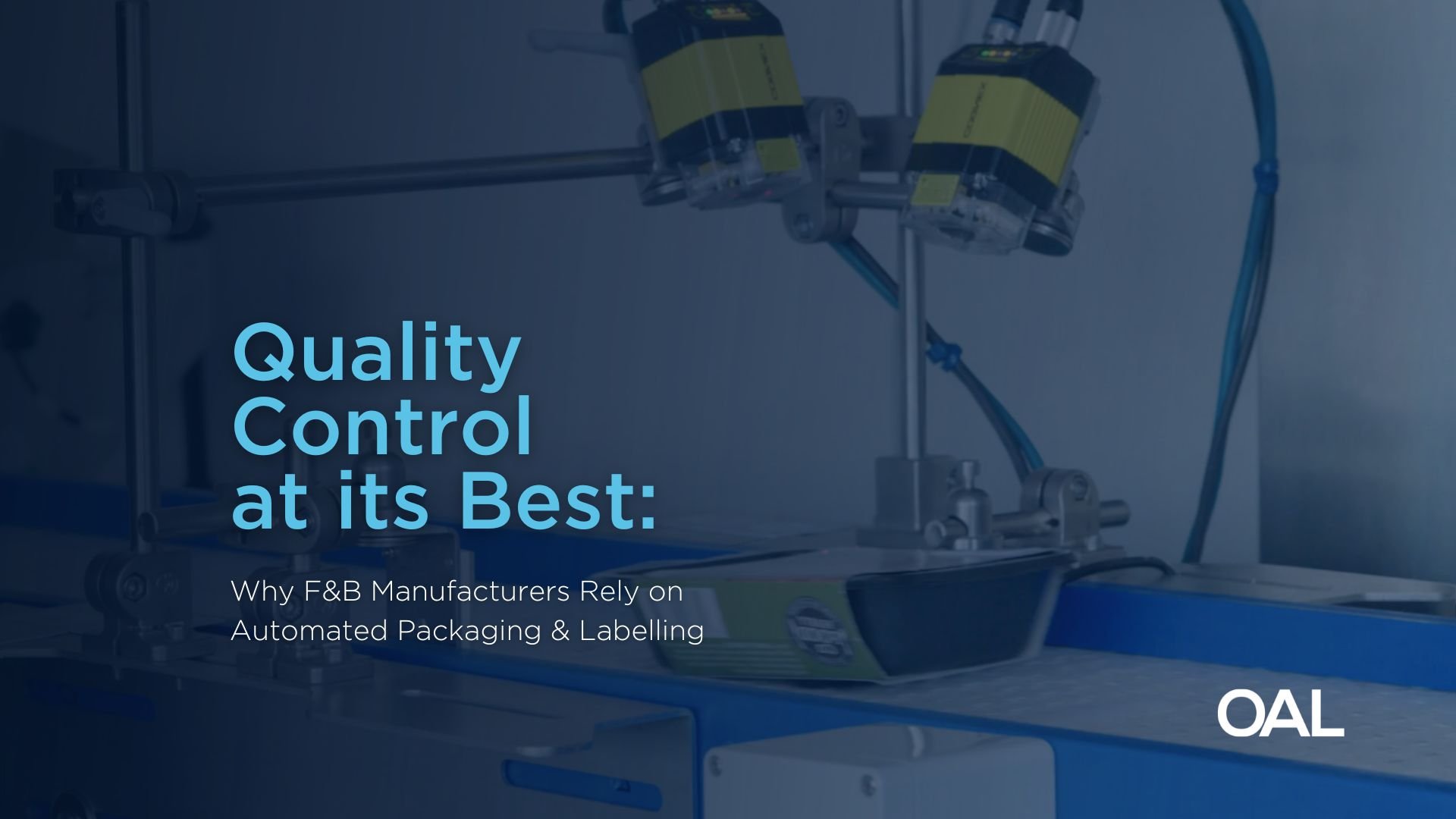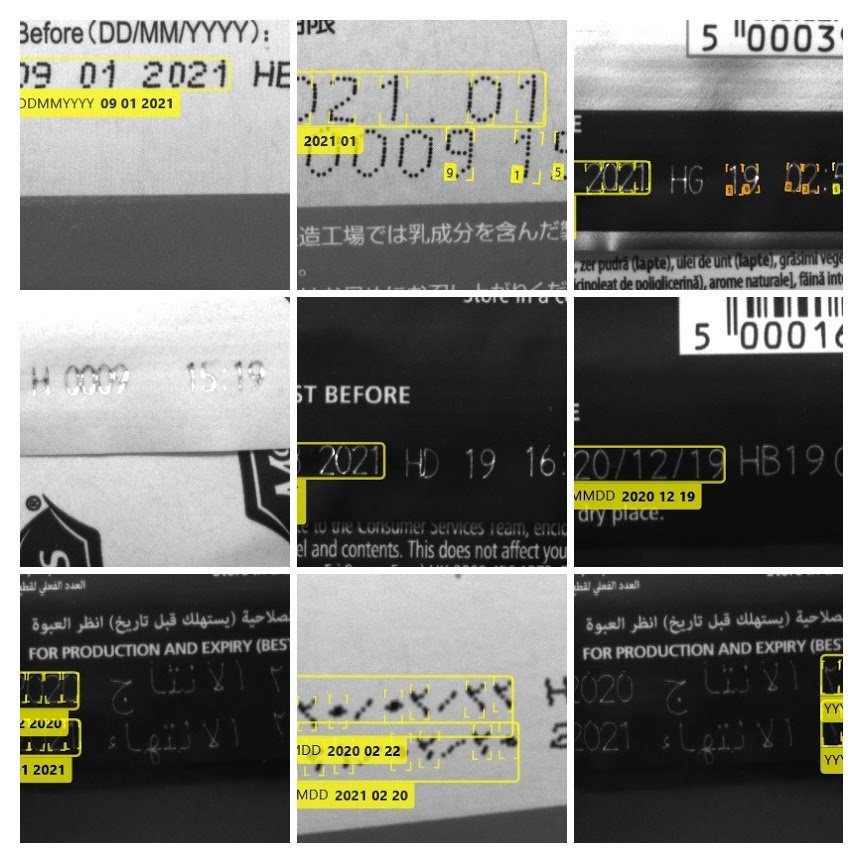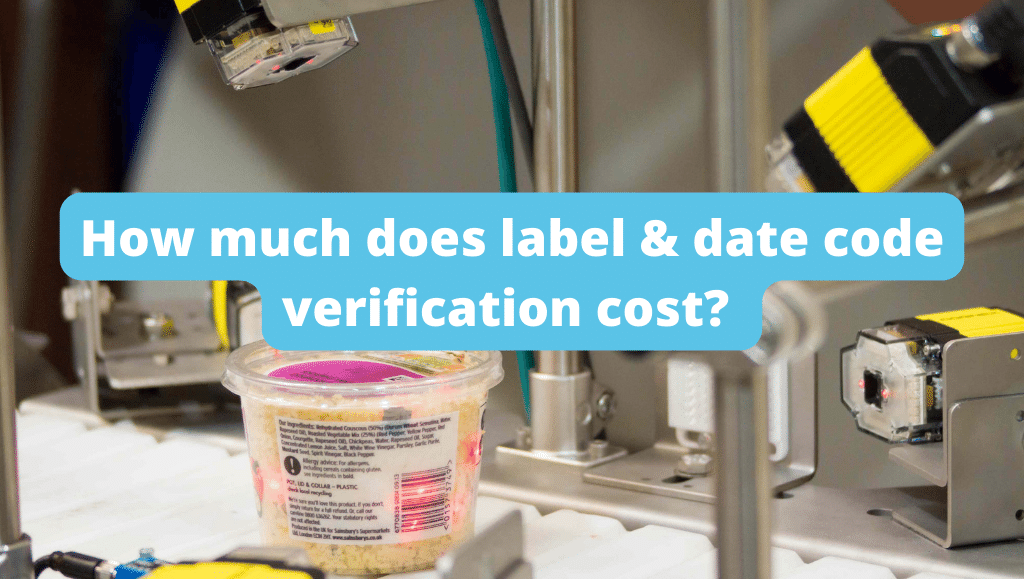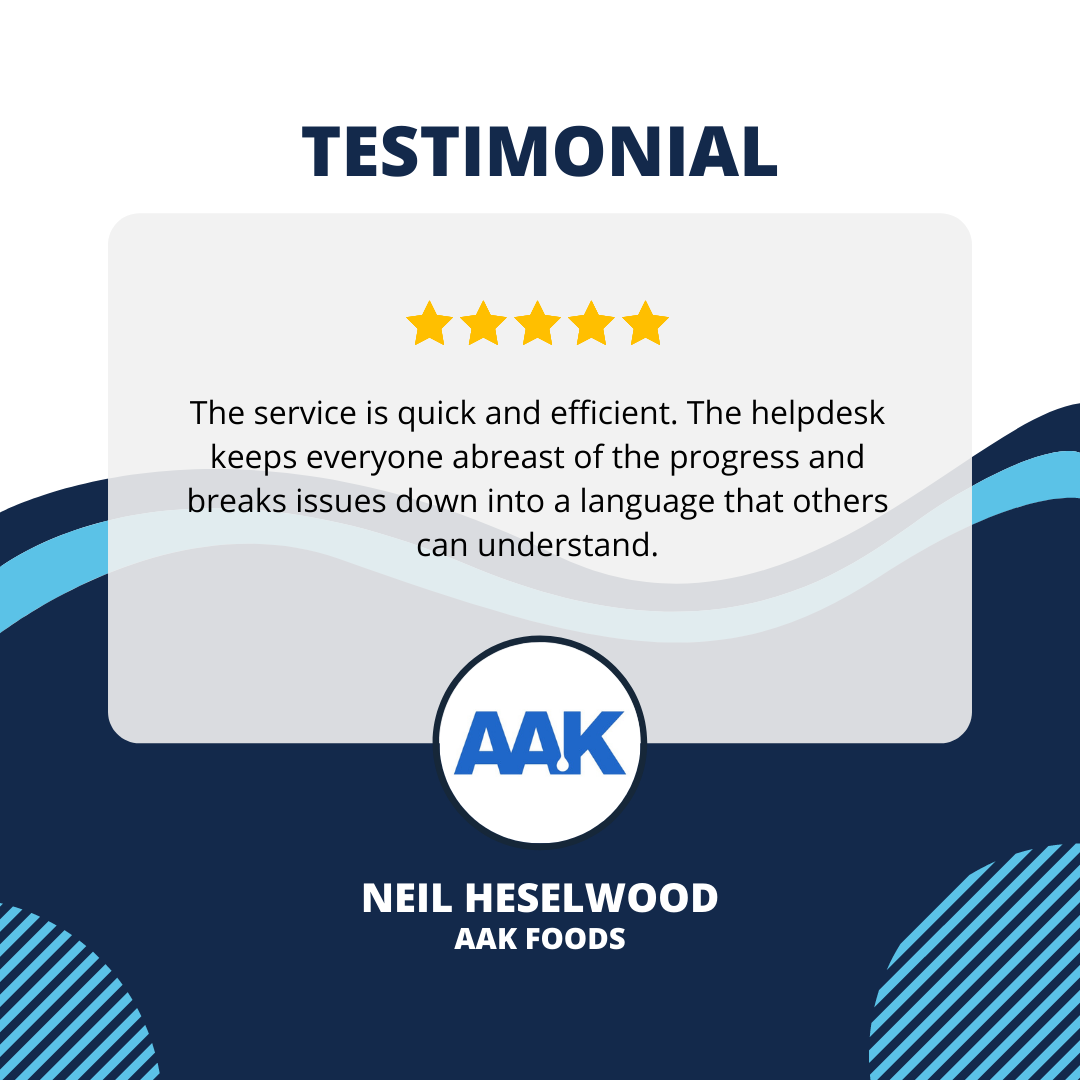Are You Ready for Humanoid Robots in Your Food Factory?
Humanoid robots are stepping off the science fiction page and onto the factory floor. For UK food manufacturers, this could be a once-in-a-generation opportunity.
It’s widely publicised that the UK has long lagged behind global competitors in adopting traditional robotics, especially in the food and beverage sector. But with the emergence of humanoid robots, this may prove to be a strategic advantage.
UK food manufacturers can leap to more flexible, human-centric solutions rather than investing in rigid, fixed-purpose automation systems. Humanoid robots are designed to operate in environments built for people, not cages, offering rapid deployment without major infrastructure changes.
As labour shortages bite and national insurance increases continue to inflate costs, food manufacturers across the UK face a mounting challenge: how to maintain high production standards without overburdening their teams or budgets.
A new solution is emerging: humanoid robots.
Why Humanoids? Why Now?
Traditional robotics has transformed parts of food manufacturing, delivering consistency, speed and safety. However, their impact has often been limited to repetitive tasks in highly controlled environments. They typically require bespoke setups, guarding and static roles.
Humanoid robots are different. They’re designed to work like us: walking, reaching, lifting and adapting to the unpredictability of real-world production spaces. This opens up an entirely new wave of potential:
Faster deployment. No need to redesign your line — humanoids can slot into existing workflows.
Labour flexibility. They can handle dull, repetitive or hazardous tasks, easing the strain on your existing team.
Safety and collaboration. Built-in sensors, vision systems and adaptive AI mean they can operate safely in shared environments alongside your team.
For senior leaders navigating wage inflation, staff turnover and cost control, the timing couldn’t be better. Humanoids offer a way to scale operations and reduce dependence on temporary labour while maintaining safety and performance.
But Are Humanoids the Right Choice for You?
At OAL, we see humanoid robots as an aid, not a replacement for traditional automation — a flexible alternative that could reshape how you think about automating a food factory.
Where previously you might have invested in costly conveyors, complex handling systems or semi-automated workstations, humanoids offer a more agile approach. They can adapt to new tasks, work across shifts and evolve with your production needs.
In some cases, humanoids will be the smart move. In others, a robotic arm or AGV might make more sense. That’s where OAL can help.
With deep expertise across automation and robotics, we help food manufacturers make the right decision for their specific applications, considering:
✅ Task complexity
✅ Hygiene and safety requirements
✅ Integration with existing equipment
✅ Cost-effectiveness and ROI
A detailed System Study gives you a clear, unbiased roadmap to the most effective, flexible, scalable solution.
Join the Conversation: Attend Our Next Seminar
Are you ready to explore how humanoid robots could fit into your operations? We’re hosting a series of interactive seminars at OAL HQ, where manufacturers, technologists, and automation specialists will come together to explore this emerging opportunity.
➡️ Reserve your place and see these robots in action — up close and in context.
“In terms of safety, quality and weighing accuracy, the APRIL cell fully delivers against our expectations. I would say that the relationship with OAL has been good to excellent. We’ve had a lot to learn about automation and robotics, and OAL has been supportive every step of the way.”
Why were food recalls on the rise in 2024?
Food recalls have become an increasingly common headline in recent years, raising questions and concerns about the safety of what we eat.
2024 is one of the most disruptive years, seeing an increase of 10%.
Due to the increasing number of incorrect labelling, Incorrect date codes, and undeclared allergens, recalls are gaining more public attention than ever before.
2024 saw a notable rise in food recalls, with 127 reported cases—a 10% increase compared to the previous year. While this reflects improvements in detection and reporting systems, it also highlights the growing complexities of today’s food production and supply chains.
What were the key causes, and how can businesses reduce their risk? To explore these questions, we spoke with industry experts, including Faye Louch (OAL), Nic Sharman (Food Safety Consultant) and Mark Spurdens (University of Lincoln.
What are the top reasons for food recalls in 2024?
According to data from the Food Standards Agency (FSA), here’s a breakdown of the most common reasons for recalls last year:
Undeclared Allergens: 53 cases
Mislabelling, recipe changes, or cross-contamination during production led to allergens like nuts, dairy, or gluten being omitted from product labels.
Physical Contamination (metal, stones, packaging, glass, etc.): 25 cases
Foreign materials entered food during processing due to equipment wear, handling issues, or insufficient quality checks.
Pathogen Contamination (Salmonella, E. coli, Listeria): 23 cases
Results from harmful bacteria like Salmonella, E. coli, or Listeria contaminating food. This can occur due to improper handling, poor hygiene, or inadequate cooking and storage conditions.
Incorrect Use-By Date Codes: 9 cases
Human error or equipment failure causes wrong or missing date codes, leading to confusion over product safety and shelf life.
Food Contamination (Allergy-related): 10 cases
Cross-contamination with allergens during production, such as shared equipment or improper cleaning, leads to allergen residues in products not meant to contain them.
Wrong Labels: 6 cases
Arises from errors in packaging design or printing, such as using the wrong label or failing to update the label after recipe adjustments.
Supply Chain Counterfeits: 2 cases
Fake or unauthorised products infiltrate the supply chain, often due to weak supplier vetting, fraudulent activities, or lack of traceability measures.
Burn Risks (exploding cans): 2 cases
Defective products can cause pressure build-up or overheating when heated.
Incorrect Ingredients: 1 case
Occurs when production line errors or supplier mistakes lead to the use of unintended or mislabelled ingredients, potentially altering the product's safety or compliance.
Based on data released by FSA for “Allergy Alert and Food Alert”
So why are recalls on the rise?
The rise in recalls reflects progress in detection technology, testing sensitivity, and consumer reporting. However, it also underscores the challenges manufacturers face in navigating increasingly complex processes and supply chains. Key contributing factors include:
Reliance on Manual Processes
Human error can occur at critical points, particularly when systems rely on standalone or paper-based methods that aren’t fully integrated.
Growing Supply Chain Complexity
With diverse ingredients sourced globally, risks increase. Managing these intricacies with manual systems for allergens or labelling is particularly challenging.
Cost Pressures and Risks
The financial impact of recalls continues to grow. As Faye Louch, OAL Connected Trainer, explains:
"If a product is recalled due to a labelling error, the costs extend far beyond the fine. You also need to account for production costs, labour, ingredients, distribution, recovery, and disposal. These can significantly impact a business's bottom line."
Example Recall: Undeclared Allergen Due to Labelling Error
When a new ingredient is added to a product, it’s critical that all teams involved—product development, production, and technical —are fully aligned.
Here’s how a simple oversight can lead to a recall:
A food manufacturer introduces a new ingredient, such as almond flour, to enhance a product’s flavour. The internal team responsible for recipe changes notifies the labelling team, who create an updated version of the product’s packaging.
However, there are now two versions of packaging artwork: one declaring almond flour and one without. Unfortunately, not all of the old packaging is disposed of, and an operator accidentally brings the outdated version to the production line.
The error goes unnoticed until the product has already been shipped to retailers. A consumer reports an issue, triggering a costly recall
OAL’s automated label and date code verification systems prevent issues like this by ensuring complete artwork version control. Using technologies like 2D barcodes, we track packaging changes and prevent the use of outdated materials on the production line, verifying every piece of packaging.
How to stop a recall.
At OAL, we understand the challenges technical managers face in maintaining compliance while improving operational efficiency. We’ve partnered with leading food manufacturers to implement robust systems that reduce reliance on manual processes, enhancing both safety and traceability. Our approach includes:
Automation and Integration
By automating label and date code verification, we eliminate many sources of human error. Integrated systems ensure consistency across production lines, improving compliance and reducing risk.
Proactive Support
Our team collaborates with you to design tailored solutions, providing ongoing training and audits to ensure compliance with BRC and other industry standards.
Improved Efficiency
Our systems don’t just protect against recalls—they also enhance operational effectiveness, helping you achieve greater accuracy and productivity.
Leena Malde, Executive Chair of Wealmoor, shared her experience with OAL systems:
““The introduction of automated systems from OAL has completely changed our operations. Since its installation, we’ve been able to streamline our processes and prevent errors before they caused further issues, protecting our reputation, enhancing trust and confidence. We’ve also seen the significant opportunity in increasing efficiency and operational effectiveness.””
Is AI the Future of Food Safety?
AI technology is playing an increasingly important role in food safety, but it’s most effective when supported by robust processes. For example, AI cameras can verify product labels, but the data driving these systems must be accurate and up-to-date.
““Technology is readily available to read and verify labels but it’s imperative teams create a culture that maintains these systems and doesn’t switch them off!””
Forward-thinking manufacturers like Worldwide Fruit are already integrating their ERP systems with OAL’s label and date code verification technology. This ensures that:
Real-Time Updates: Production changes are immediately applied across systems.
Error Reduction: Human intervention is minimized, ensuring accurate checks every time.
Improved Traceability: A single source of truth provides end-to-end visibility and accountability.
By digitalising manual processes, manufacturers gain not only safety and compliance but also valuable insights into production trends, downtime, and efficiency.
Looking Ahead: Protecting Your Business in 2025
Recalls remain a sensitive and challenging issue, but with the right systems in place, they can be significantly reduced—or even eliminated.
At OAL, we’re here to support your business every step of the way, from designing and implementing automated solutions to providing training and ongoing support.
For more details on automated label verification, contact us by clicking the button.
Kick off your promotions with confidence
In the consumer goods industry, the ability to swiftly and accurately update packaging for seasonal events. Automated label verification systems, such as those offered by OAL, play a vital role in managing these changes efficiently.
Why you could benefit from an OAL Automated Verification System.
In the food industry, the ability to swiftly and accurately update packaging for seasonal events such as football tournaments, the Olympics, Christmas or Valentine’s Day is crucial. These occasions often require unique, event-specific designs that attract consumers and enhance brand visibility. Automated label verification systems, such as those offered by OAL, play a vital role in managing these changes securely and efficiently.
The power of the 2D barcode
M&S has adopted 2D barcodes across all its ranges. Typically the 2D barcode sits within the date code box.
But why? 2D barcodes provides food manufacturers with artwork version control.
This means the SKU can have the same 1D EAN barcode but different 2D barcodes, depending on the artwork.
So, artwork with a Team GB flag on has a unique 2D barcode compared to everyday artwork.
OAL’s claim to fame is introducing the first 2D code on pack for label verification. In 2006, we helped First Milk secure its cheese packaging by using 2D barcodes for verification.
18 years later, it’s surprising how many brands still don’t use it!
100% continuous and precise verification
Combining 2D barcodes with an autocoding system puts you in complete control of your packaging.
Your technical team controls which version is available to select on the line. Our system has two users sign off, so any change must be authorised for added protection.
They can also set availability so your promo artwork can only be used during a set date range.
Once the job is selected on the line, a camera will scan the 2D barcode of every pack to ensure you’re using the right artwork.
Here is an example case study of how Edwards the Welsh Butcher eliminated errors with OAL’s AI-driven verification system
But what if I don’t want to put a 2D barcode on my artwork?
An alternative way to verify artwork is machine vision. We’ve been deploying powerful AI Cognex cameras that take a single image of a pack and can verify every detail. For instance:
Packaging artwork text e.g. seedless
Date code, use by or best before
Variable field information, including “Country of Origin” & “Grower”
Promo label presence and content
Finished product (if visible)
Key benefits of automated systems
Quick set-up and integration
These systems are easily integrated into existing workflows, ensuring a smooth transition to new packaging designs.
Allergen tracking
With advanced tracking capabilities, companies can manage allergen information accurately, even with frequent design changes.
Tailored alerts
Immediate feedback and alerts ensure any discrepancies are addressed promptly, keeping the production line running smoothly.
Conclusion
Seasonal events like Euro 2024, the Olympics or special holidays are opportunities for brands to engage with consumers through bespoke packaging. Automated verification systems are essential in managing these changes, ensuring accuracy, reducing errors and maintaining high standards. By leveraging such technology, brands can confidently embrace seasonal marketing strategies without compromising on quality.
OAL utilises its APRIL Eye technology to ensure that customers have the most reliable safety net available, capturing a plethora of required data and verifying at impressive speeds. OAL also helps food manufacturers integrate their ERP systems across a number of applications creating a single source of truth that businesses can rely on.
For more details on automated label verification, contact us by clicking the button.
9 key benefits of ERP Integration with your Packaging Line
Digital transformation within fresh produce and food manufacturing businesses requires enterprise resource planning (ERP) integration with manufacturing and shopfloor operations
Fresh produce and food manufacturing businesses on digital transformation programmes understand the importance of integrating enterprise resource planning (ERP) with manufacturing and shopfloor operations. This blog shares the key benefits of integration, highlights successful applications from other food manufacturers, and explains how the integration is achieved using the Ignition SCADA/MES platform.
Why integrate ERP with your manufacturing operations?
Food manufacturers can improve their profitability, agility, and efficiency by integrating SCADA and ERP. The integration adds real-time data to your ERP system, gives context to shopfloor data, and enables the coordination of schedules, orders, distribution, and more, helping your company comply with regulations, improve efficiency, increase transparency, and accelerate data availability and synchronisation.
If your systems are not integrated and are “siloed” you are likely to suffer from these issues:
Inaccurate information. Manual data input for OEE calculations skews efficiency measures. Teams can lose trust in data and question its reliability.
Higher operating costs. Reliance on manual double entry (sometimes more) of critical information.
Slow decision-making. Changes in customer orders or raw material shortages don’t reach key personnel in a timely manner. For instance, receiving a custom report the day after versus real-time notification.
Increased opportunity for error. Entering information in multiple systems increases the chance of re-keying incorrect data.
Decreased agility and ability to understand the full value stream. Departments and teams struggle to see the bigger picture. Improvements can be made to an asset or area but not the whole value system.
ERP integration will have a transformational impact on your manufacturing business, streamlining and providing critical real-time information. But can it deliver a payback? With rising wages and limited availability, the cost of lost hours and downtime is increasing.
A £50,000 investment needs to save 2,000 hours* per annum to deliver a 1-year payback or just 5.5 hours per day.
*Based on hourly wage rate of £25 per hour taking into account total cost of employment.
So how do we save those hours? Here are some benefits of ERP Integration to consider:
1) Data Integrity
Integration creates a single source of truth for your business. For label and date code verification (Autocoding), this means that you no longer need to manage two product databases. SKU packaging, data code and variable field (country of origin) data can all be held in your ERP.
2) Agile Scheduling
Changes in ERP scheduling or other scheduling software are immediately updated for operations. Time isn’t lost preparing for the wrong job.
In 2020, OAL installed a standalone label and date code verification system at Worldwide Fruit. In 2023, we completed a project integrating the label verification system with their ERP.
Target pack counts update throughout the day based on actual orders received in your ERP.
3) Agile response to customer orders and requirements
Update and respond to changes to customer order volumes and requirements in real-time.
At Driscoll's (formerly Berry Gardens) OAL integrated their packaging line control and provided an OEE system built on Ignition integrated with their ERP, Prophet. Their customer order quantities are updated throughout the day and now operations know as soon as they change!
4) Improved business insight & target-setting
Benefit from real-time information and generated by reports dedicated to your specific data requirements.
Yield and giveaway are key metrics for businesses packing expensive dairy and meat products. Management can see yield in real-time as opposed to a report the day after.
5) Enhanced collaboration with works order visualisation
Align technical, operations, engineering, marketing, and sales with shared real-time data. Receive scheduled works orders from your ERP and visualise works order progress through your factory, including real-time ingredient traceability and consumption.
When raw material delays or shortages occur, you can quickly pull together a new schedule based on what you have on hand and what you need to make. With a better understanding of your overall order pipeline, you can start towards strategies like “just-in-time manufacturing.”
6) Track raw materials and inventory through production
Inventory is an easy win when integrating SCADA and ERP systems. You can track which raw materials are in the warehouse, what you need to produce orders for a given day, and which finished goods will be ready for shipment once production is complete. If you find you are running low on raw materials, you can quickly shift production to another order before the lack of raw materials stops the line. Then, by tracking real-time production, you can trigger the re-ordering of materials and parts during production when inventory starts to get towards your order threshold.
At Premier Foods, Ashford, OAL’s SCADA and MES solution integrates with SAP to track raw materials and report real-time usage.
7) Lower operational costs
By using streamlined business processes and highlighting improved best practices through real-time data, you can also lower management costs through uniform and integrated systems.
8) Consistent cyber secure infrastructure
From the back office to the front office, all business activities will have the same look and feel, making training easier. Ignition features ultra-secure SSL technology and supports modern cyber security protocols such as federated identity infrastructure, multi-factor authentication (MFA), and single sign-on (SSO).
9) Reduce risk with the right product raw material validation
Integration to ERP can validate ingredient usage against live jobs and bill of materials in production. For example, to enable or disable the tip sequence to prevent incorrect materials from being introduced.
How to use Ignition to integrate your ERP with manufacturing operations?
ERP is an IT system, and SCADA is an OT system. Transferring data is difficult as OT and IT use different languages, and their data is stored and gathered in different ways.
Ignition makes the process of connecting SCADA to cloud ERP much easier. Ignition is a web-based SCADA, MES, IIoT, and HMI platform built on open standard technologies, and it is already designed to connect SCADA and OT with IT through an OPC UA server. Depending on the application requirements the integration can be achieved in four different ways.
1. Set up an API (Rest)
Provides a direct network connection between the ERP and the SCADA/MES for real-time, bi-directional information exchange.
OAL’s Label and Date Code Verification and APRIL Robotic Weighing systems have a standard Rest API for communicating with ERPs.
2. Shared Database Table
A database table is established as a common communication point. The ERP system and the SCADA/MES system use this table to exchange information.
OAL has completed many integrations using shared SQL tables. For instance, the Premier Foods SCADA system at Ashford uses shared SQL tables.
3. Stored Procedure or “View"
A stored procedure or “view” is installed in the ERP database for the SCADA/MES application to read and/or modify a specified subset of data from the ERP system.
Where possible we avoid this methodology as it can be difficult to ascertain the origin of a new or changed item of data.
4. Export CSV or XML File (Flat File)
The ERP writes a .csv file to a common location. The SCADA/MES software regularly looks for new files containing needed information. For instance, exporting a CSV schedule of works orders and upload to the SCADA/MES to provide a schedule. This approach is common if you’re running a legacy ERP with no connectivity, for instance, we have used this approach to integrate systems within the UK’s largest flour mill.
We would love to share more with you about the benefits of ERP Integration.
If you would like to discuss more about how ERP integration would be beneficial to your operation, then reach out to the OAL team.
Five challenges to running a profitable fresh produce business...and how automation can help
Fresh produce businesses are facing a “perfect storm of challenges” tackling erratic weather and soaring input costs exacerbated by shocks including Brexit, Covid and the cost-of-living crisis. Discover how automation helps fresh produce businesses succeed.
According to the Grocer, fresh produce businesses are facing a “perfect storm of challenges” tackling erratic weather and soaring input costs exacerbated by shocks including Brexit, Covid and the cost-of-living crisis. This blog explores how automation emerges as a key ally, bolstering success in this dynamic sector.
Over the last 5 years OAL has helped fresh produce businesses automate including key industry players such as Driscoll's, MM Flowers, Wealmoor, and Worldwide Fruit with a combined turnover in excess of £3bn.
Learn more about Worldwide Fruit’s journey here
Fresh Produce Challenges
1 - Limited labour availability
Key workers, essential during peak months, are limited in number by UK government rules for “Special Workers”. Automation can significantly boost productivity, offsetting these limits and upskilling local talent.
2 - Rising labour, raw material and energy costs.
Input costs have risen across the board. And with the minimum wage set to increase from £10 to £11.45, they’ll continue to rise in 2024. Automation can curb and even reverse the trend of rising costs in the industry.
3 - Supply chain complexity
Natural disasters and weather shocks mean businesses must maintain flexibility of supply and be able to react fast to any changes.
4 - Product diversification
Experimentation with new packaging formats to drive revenue and profitability with key targeting for snacking. Automation gives you the confidence to introduce more complexity like artwork variations as each can be easily tracked and verified.
5 - Retailer requirements
Retailers' stringent requirements for food safety, product integrity and traceability can be effectively met through automated solutions including vision.
Is automation and digitalisation the answer?
Whilst automation isn’t a “golden bullet”, it’s a key enabler. People are the heart of fresh produce businesses and it’s their ability to adopt and benefit from technology which is critical to success. At OAL we promise to make it easy to adopt new technologies, for instance, our best-in-class 24/7 support and training.
We’re big believers that modern fresh produce businesses will be digital (no paperwork), and integrated (systems talking to each other) and artificial intelligence (AI) will have a significant role to play.
Tackling labour availability and scarcity with a major productivity boost.
Creating a modern, digital working environment can empower shop floor operations and help recruitment. “Digital natives” prefer iPads and tablets to paper and pen, so will prefer a modern automated packhouse making recruitment an easier process!
Automation can also simplify and shorten workflows with a big impact on the bottom line. Take grower code changes. If you’re manually setting up printers, each grower change takes up to 5 minutes as an operator keys the information into the printer and stops the line. Multiplied by 30 changes per day across multiple lines, it can be a costly source of downtime. At the UK’s largest avocado packhouse, OAL has helped them reduce changeover times from 5 minutes to 2 seconds, a saving of approximately 10,000 hours per annum across all lines.
OAL customers have a “Grower Change button.” They simply load a SKU, and click the button to change the grower information from a pre-defined list on the fly!
But it doesn’t end there! With ERP integration, we can pull this information directly from the works order. Talk about a time saver!
Meeting and exceeding retailer requirements.
100% Packaging verification. Automation can help reduce human error, resulting in a higher-quality product that meets customer expectations consistently. The aim is 100% verification of all pack formats (flow wrapper, PLU, etc.)
For more information about how OAL can help you achieve 100% packaging verification, read our recent blog on “Top 10 AI Verification Quality Checks for Food Packaging”
Business agility with a single source of truth.
Change is a fact of life in the food industry! We can build the capability to react fast and effectively. By integrating systems together, fresh produce businesses can create a single source of truth. Any changes are instant and updated across all systems giving you confidence in your slick operations.
Want to learn more? Worldwide Fruit partnered with OAL in 2020 to automate its packhouse operations. Starting with label and date code verification, we’ve worked together to integrate their ERP system.
If you would like to discuss beginning, or enhancing your automation journey, please reach out to the OAL team today.
OAL are joint hosting an event with the University of Lincoln to talk about automation and sustainability. Interested? Register your interest here.
Top 10 AI Verification Quality Checks for Food Packaging
AI has the potential to transform every process in every industry; the secret is not to simply view it as what manual processes can AI replace, but how AI can transform what you do.
The world of AI has exploded in recent years and whether it excites you or scares you, we cannot ignore the transformational impact that it is having. AI is touching everyone, from personalising our online shopping experiences to powering natural language chatbots. From self-parking cars to intelligent navigation, from editing photos we take on our smartphones, to transforming the diagnosis of major illnesses.
AI has the potential to transform every process in every industry; the secret is not to simply view it as what manual processes can AI replace, but how AI can transform what you do.
Here we take a look at our top 10 verification checks, where AI cameras can help you.
Rule #1: AI + camera technology = quality game changer!
Original 1D barcode verification in 2001
For decades, the quality control of packaging and labelling has been a manual task, reliant on human attention to detail and often a factor that slows down the speed of the production line.
In 2001, we introduced the first barcode verification system with Tesco and Bakkavor.
In 2019 we introduced APRIL Eye, the world’s first AI-based date code verification system.
Prior to that there had been a reluctance as OCR vision couldn’t handle the variation of the fast-moving food industry.
By combining AI with vision camera technology, the game has changed. The best way to understand the impact that AI-powered cameras can have on packaging and labelling quality assurance is through real-life use cases.
1) That’s not an apple!
The worst nightmare - an item placed in the wrong packaging. AI-powered cameras are able to see beyond clear packaging and recognise the items inside. Is the item in the apple packaging actually apples? Or are they pears?; or maybe even the wrong type of apples? – the AI-powered camera can spot this.
2) Where are my croutons?
When there are multiple components required to be placed inside the packaging, a key quality step is to ensure that everything is included.
Verify the presence of components like croutons in bags of salad.
3) I can’t eat that without a fork
You’re packing a meal kit; has everything been included?
Verify the presence of objects like forks and spoons.
4) Where were these made?
Read and verify printed text on the packaging.
Check the country of origin matches the works order.
Conduct multiple checks simultaneously to include the presence of the finished product.
6) Are we on promo?
An AI camera can check the presence and content of a promo label.
7) Check allergens on WIP product
Ensure WIP product brought to the packaging line is correct by reading the printed information on the film.
8) Is the lid on tight?
With AI, you can verify every product to ensure rare events like bad lidding is caught in the factory.
9) Is the seal intact?
Verify the seal integrity of finished products using AI cameras.
10) Italian or cheesy?
The label on the bread says “Italian”, but is it really? Checking that the right type of bread is in the correct packaging with the right label is another great example.
Leveraging AI To Make A Big Impact
These are just some of the areas where AI-powered cameras and packaging and label verification solutions are having a big impact on food manufacturing. Yet this is only scratching the surface of what is now possible.
Have you considered ERP integration? By integrating your ERP with line devices you can make the most of AI to ensure your business is running off one single source of truth.
We can help analyse your process to understand the impact AI cameras can have on your quality. If you would like to discuss any of the use cases please do get in touch.
Why Every F&B Manufacturer Needs Automated Packaging & Labelling Alongside Date Code Checks
As a responsible food and drink manufacturer, you understand the significance of delivering safe and trustworthy products to consumers worldwide. Customers trust your brand to give them safe, tasty products, and they want to know they can trust what's on the label. That’s why automated packaging and label verification alongside date code checks play a crucial role, serving as your dedicated quality control team to guarantee perfection.
As a responsible food and drink manufacturer, you understand the significance of delivering safe and trustworthy products to consumers. Customers trust your brand to give them safe, tasty products, and they want to know they can trust what's on the label. This is where automated packaging and label verification alongside date code checks play a crucial role, serving as your dedicated quality control team to guarantee perfection.
Why You Need Automated Packaging and Label Checks
When you're making hundreds, thousands, or even millions of items, it's hard to keep an eye on every single one. But your customers are counting on you to get it right. If a package goes out with the wrong label or missing information, it could be dangerous or even life-threatening to someone with allergies. Plus, if you're an own-label manufacturer, most retailers, including Marks and Spencer and Sainsbury’s, require a continuous online verification system.
With automated packaging and label verification system, you can check every single item you produce to make sure it's packaged and labelled correctly.
How OAL automated packaging and label verification works: We install cameras on your production line that scan every package. They check it against the job you're running and if something's not right, they'll stop the line so you can fix it. It's like having a second pair of eyes that never get tired or distracted.
The system stops the line and alarms if there is a fail-safe fault including:
Wrong packaging detected
Excessive no reads, product detected but no barcode found
Sensor failure
It's not just about safety and law either. If your products always look perfect and professional, it's good for your business. People are more likely to trust and buy from a brand that looks like they've got their act together.
Watch how the automated label verification works:
Why You Need Date Code Verification
Accurate date codes are equally crucial. They inform retailers and customers about the product's manufacturing and expiry dates, preventing early spoilage or unnecessary discarding of perfectly good stock. Incorrect date codes can tarnish your reputation and adversely affect your bottom line.
The good news is OAL has a system for this too. Our system configures your printers to ensure the accurate printing of date codes for each job, eliminating human errors like typos or incorrect printer settings.
Our AI vision system, known as APRIL Eye, meticulously inspects every date code to ensure correctness and legibility. It adapts effortlessly to different fonts, sizes, and positions, showcasing its exceptional versatility.
Wrapping It Up
So, why do you need automated label and packaging verifications alongside date code checks? It's simple: to make sure your customers can trust your products, to follow the law, and to keep your products looking their best. It's all about taking pride in what you do and making sure you're delivering the best for your customers.
At the end of the day, OAL's systems are there to help you do just that. Need help? Let’s have a chat.
How much does a label and date code verification system cost?
We take you through the factors that affect the price of a label and date code verification system. Every business has its own requirements, so a single price can’t cover every packaging line scenario but by the end of this article you will have a solid understanding of the factors that drive cost.
Are you wondering how much it will cost to automate your label and date code verification (Autocoding)? Whether you're looking to improve compliance, reduce waste, or eliminate human error, this guide will help you understand the factors that affect pricing—so you can make the right investment for your business."
This is a great question, but, unfortunately, there is no black and white answer.
In this article, we will take you through the factors that affect the price of a label and date code verification system. Every business has its own requirements, so a single price can’t cover every packaging line scenario but by the end of this article you will have a solid understanding of the factors that drive cost.
Once we’ve covered standard functionality, we’ll review additional “added value” options.
“Standard functionality” is subjective. Our definition ensures compliance with all current retailer codes of practice but these requirements are constantly evolving. A current requirement in demand is date code verification, the ability to read the date code printed on the pack. As food manufacturers move towards unmanned packaging lines, advanced vision for online date code verification is becoming increasingly prevalent and will likely become “standard” over the next couple of years.
How much does Autocoding cost?
A standard label and date code verification system (Autocoding) can cost anywhere from £15,000 up to £40,000+ per packaging line.
Now, you’re probably asking yourself, “Why is there a big difference in price per line” Here’s why...
A standard label and date code verification system is made up of:
Hardware: Line terminals (IPCs, HMIs, PLCs), 1D/2D barcode scanners, vision cameras, sensors, brackets and accessories.
Labour: Installation, commissioning, software integration and training.
Software: The system software is typically modular and supplied on a one-off perpetual licence. Some vendors may offer software as a service (SAAS).
The complexity of a solution will dictate whether your system is leaning towards the low/high side of the cost spectrum. The key drivers of complexity are:
Packaging complexity. The number of packaging elements and SKUs.
System functionality: Packaging verification. Date code control. Vision. OEE. Paperless, to name a few.
System integration: A stand-alone system is the most cost-effective option however there are big benefits to integrating with existing business systems like your ERP, MES or other systems.
Standard functionality
What is the standard functionality for a label and date code verification system?
One of the main reasons for buying a label and date code verification system is compliance with a retailer’s code of practice.
Tesco, ASDA, Sainsbury, Waitrose, M&S, Morrisons, Lidl, Aldi, Co-op, Amazon all have slightly different technical requirements.
For the purpose of comparison, our definition of standard functionality ensures compliance with all codes of practice (but please get in touch with us if you need specific advice).
We’ve broken down the costs as follows alongside the requirements to satisfy retailer’s codes of practice:
Line terminals
Packaging verification – 1D/2D barcode scanners
Printer control
Software
Database manager
Line terminal
Reporting
Training and audits
Line terminals and HMIs
Example of a line terminal
Each packaging line will require a line terminal for the operator to select jobs and complete quality checks. The line terminal requires a hand scanner for completing checks and a login method e.g. RFID or ID card scan.
The line terminal can be wall-mounted or on a stainless-steel pedestal and requires a power and ethernet connection. The line terminal is normally located where operators currently conduct their paper-based checks.
Typically, each packaging line will have its own dedicated line terminal, but some may have a 2nd line terminal or use a mobile device for quality checks if there is a high-low care divide.
For compliance, the system must be suitable for use in a food packaging environment and the line terminal should be a minimum of IP65 with a colour touchscreen interface.
Hardware costs have been subject to fluctuation due to supply chain issues and double-digit percentage increases have been common. Provided good access, a single line terminal should be installed within half a day. For a budget cost, we would advise £9,000 per line terminal, installed and commissioned.
Packaging verification - 1D/2D barcode scanners
The system must automatically monitor all packaging throughout the production run to ensure the product is always packed in the correct packaging.
Systems will use inline barcode scanners to scan the barcodes on the packaging and verify it’s correct. The number of scanners required per line depends on:
The number of packaging elements. For instance, one scanner to read the lid and one to read the base label.
Artwork position of barcodes. The same packaging may have the barcode in a different position for different customers. Additional scanners may be required to “see” the barcode.
A quick google search reveals the cost of barcode scanners can vary from £800 to £7,000+ per scanner based on the functionality and capabilities they offer. To meet code of practice requirements and to minimise downtime, a high-performance scanner is required:
The system must show the number of ‘Good reads’, ‘No Reads’ and ‘Mismatches’ detected. The system should ensure no ‘Misreads’ or ‘Mismatches’ and be guaranteed for a Six Sigma Accuracy (99.99966%) level i.e. 3.4 defects per million opportunities (DPMO).
The scanner should also be capable of reading both conventional 1D linear barcodes (e.g. EAN13/8) as well as 2D Data matrix barcodes.
See: 1D and 2D barcodes - what’s the difference?
Aside from the hardware cost of a scanner, time is required for an engineer to install and commission each scanner. Again, the amount of time required is subject to a number of factors (access to the packaging line, mounting arrangement) but per scanner, engineering time will typically start from 4 hours. For a budget cost, we would advise £3,000 per scanner, installed and commissioned.
Printer control and monitoring
Printer control requires the system to automatically set up all online date coding or label printing devices from the database date code information.
Each printer manufacturer will charge a one-off licence fee to connect to each printer. Time is required for the commissioning of each printer. For a budget, we would advise £3,000 per printer, installed and commissioned.
The label and date code verification system will integrate with the printer company label creation software:
Domino printers will use QuickDesign.
ICE/Videojet/Linx printers will use Clarisoft
Markem printers will use COLOS.
Printer control removes the risk of operator error from entering the wrong date code for the printer to print but doesn’t guarantee the date code actually printed on the pack. Some printers now offer the ability to check the print ribbon to validate the print is applied. To fully close the loop, a picture can be taken of the printed date code on the pack and validated with vision/AI to check the printed date code is correct on the pack. See advanced vision below.
Software
The system software comprises:
Database manager. Software to view and manage the master product database. The database is installed on an existing SQL server managed by the manufacturer.
Line terminal. Software to run jobs and complete quality checks on the packaging line.
Reporting. Software to report on jobs, quality checks and traceability.
Typically, the software is modular and sold on a one-off perpetual licence as part of a turn-key solution. The software will require configuration, installation, commissioning and testing by trained engineers. The amount of engineering time will depend on the total number of devices and configurations required for each packaging line.
To ensure code of practice compliance the software must:
Have a central auditable database of packaging components and date coding rules for every product SKU, which resides on a central server in the system.
Create a central electronic audit log for all factory line events. The audit log must not be compromised by network or central server failure.
Manage system access with authorisation level based on user role. Hence, the requirement to login to the line terminal with RFID or a swipe card.
The system must have the ability to manage production exception conditions such as process or equipment concessions in an auditable way.
The system must have the ability to deploy the product data from the central database to a factory-based line terminal in such a way that the integrity and use of the system is not compromised by either network or central computer failure.
The system must be resilient against accidental or deliberate human error or tampering. Examples of the types of events that must be protected against include:
Disabling of packaging barcode scanning devices by unplugging, covering or misdirecting
Disabling of product detection PECs by unplugging, covering or misdirecting
Disconnection of the communication links between the system and date coders or labellers
Over-riding code set-up information from the system by direct entry/modification of the deployed date code at the coder screen
Training and audits
Users of the label and date code verification system will require training. Training is typically split between 3 groups:
Technical super-users: People responsible for entering and maintaining SKU information in the product database.
Engineering: People responsible for physical system maintenance.
Operators: People who use the system daily to run jobs on the packaging line.
The total amount of training will depend on the number of people in each category and your own production schedule. For a site with 10 packaging lines, we would expect a minimum of 5 days of on-site training to cover all 3 groups.
The majority of retailers also request the system is audited annually by the technology supplier to ensure the system if functioning correctly.
Additional system functionality
Label and date code verification systems typically offer additional functionality to help improve payback and offer a seamless user experience. Typical additional functionality includes:
Downtime recording and reporting – OEE. The same system infrastructure (line terminals, database etc.) can also record downtime and pack counts for OEE and other performance measures. Pack count sensors will need to be installed and software configured. There will likely be additional software licence costs. Prices will likely vary from £5,000 to £12,000 per packing line.
Date code verification (optical character verification). Read back the printed date code on the pack and verify it’s correct to the currently running job. Additional cameras will need to be installed and commissioned to take the pictures. A central high powered server is required to process the images. Prices will typically start from £12,000 per packaging line subject to specific requirements.
Integration of the system with planning/ERP/MES software. The master product database can be populated from your existing ERP or MES system.
Paperless quality assurance. Often paperless quality checks are included free of charge with a “standard” label and date code verification system.
Checkweigher and other device reporting.
Next steps
Bringing it all together, a budget-friendly turn-key price for a packaging line equipped with two scanners (top and base label) and one printer connection starts at around £18,000. Of course, several factors can influence this figure, either increasing or decreasing the cost. You could also unlock additional savings when purchasing multiple lines and software licences simultaneously.
To get an accurate idea of how much a label and date code verification (Autocoding) system will truly cost for your business, the best next step is to arrange a site visit. One of our experienced engineers will review your specific requirements and tailor a solution perfectly suited to your operations.
Ready to explore the possibilities? Book your site visit today and take the first step towards smarter, more efficient packaging!
How to use OEE waterfall reports to add value to food manufacturing operations
Ask production staff how well the morning run has gone and the conversation could go one of several ways. “It was OK, we managed to get the order out” or “It was terrible, everything that could go wrong went wrong”. Neither is particularly helpful to the maintenance or continuous improvement teams trying to get to the facts to assess what really needs to be done.
The OK comment could easily be hiding a multitude of problems – we may have managed to meet the order demand, but at what cost? We remember talking to one first-line manager who felt the first six hours of the shift had been OK but had not realised 90 minutes had been lost through a variety of speed losses and stoppages. 90 minutes lost in six hours is probably not 'OK' by most measures.
The “everything went wrong” comment is probably worse, “it’s making a funny noise” doesn’t really help the maintenance team when they arrive, especially when the noise has already stopped.
Step forward, the "OEE Waterfall" technique. When the technique is applied to OEE it becomes a consistent and user-friendly way of showing the real impact of production performance. A waterfall might appear to be an unusual model on which to base an OEE production report but when the object of the exercise is to reduce wasted time in the production process it’s a good way to visualise how well, or how badly, things are working.
The OEE waterfall graph for a food manufacturer
The OEE Waterfall graph shows one day of production.
Plan - our production aspiration, the time we intend to run the plant to fulfil the order demand, they are planning to run for 18 hours per day.
Mechanical/electrical. Downtime associated with mechanical or electrical faults.
Operational issues. Downtime such as slow running machinery,
Planned – Planned downtime has been scheduled in and would cover off product changeovers, breaks etc.
Short stoppages – Short stops - these can be particularly damaging for OEE.
Variance to standard – Poor product quality.
Waiting for internal – Waiting for internal resources, this will drill down to labour, ingredients etc.
Added value – ‘Added Value’ the true point of the exercise, our production aspiration was 18 hours but we managed to add value to the business for just 9.5 hours.
Baseline captured, time to improve.
Once that baseline of Added Value is generated, in the above example 10 hours, we can continue to capture accurate data and create an improvement culture.
Publish the results. Many customers chose to highlight KPIs on large TVs in the canteen so everyone can see the improvements made.
Techniques to improve.
Agree to a blame amnesty; it’s not about fault it’s about resolution
Create a top 5 or top 10 loss wall in the CI campaign room
Take a series of photographs of the loss to be improved
Take a photograph of the person accountable for that improvement
Show the position of that loss by generating a graph of top 5 or top 10 losses
Generate a graph for the specific loss over time, usually thirteen weeks
Document an improvement plan of action to resolve the issue
Record progress and meet weekly to monitor resolution
React to a lack of progress and provide additional support to the person accountable as required
Don’t change direction when things get tough, or change the system
Just keep remembering the effect of a low ‘added value’ score. In the illustration above the factory has funded the assets, labour, materials and energy costs to the tune of 18 hours per day but has only gained 9.5 hours of effective production output, fit for sale, in return. It’s sobering to consider that virtually every improvement that increases that value of 9.5 hours either reduces the loss or goes straight to the bottom line as profit.
How to prevent promo label errors
Promotional labels are a staple of the food industry. Whether it’s offer messaging, like 3 for 2, or product information, such as 100% organic, the options for additional flashes to entice consumers are endless. But ensuring the right promo label is applied to each product, on top of the standard packaging checks that are required, can be difficult and it’s easy to lose track and send out products with incorrect promos – potentially leading to a product recall costing tens of thousands of pounds. We can all agree that this situation is best avoided so how can you prevent promo label errors? Automation can help.
Leave behind complex, paper-based checks…
Ensuring that the right product leaves the factory in the correct packaging with the authorised date code can already be a complex job without automation, with various paper-based checks and approvals. But if you add in promo labels, this brings a whole new level of complexity that can cause problems on the packaging line. Whether your promo labels are applied automatically by your bagger or flow wrapper, or you’re affixing stickers directly to an individual item, without any identifiable features such as a 1D or 2D code, you’re reliant on your operators to match the right product with the right packaging and the right promo label every time. This can be a tall order even with paper checks and control procedures as it’s easy for things to be missed in a busy factory floor with hundreds of products coming down the packaging line every minute.
In most instances with your retail customers, if you apply the wrong promo label, you’ll receive a fine, in addition to the costs associated with removing the product, alongside other indirect costs, such as reputational damage or loss of contracts, so it’s imperative to get this right. But with the risks associated with paper-based and visual checks, you need a more robust system.
Say hello to automation!
The OAL Connected system solves the problem of complex, paper-based checks by automating all label and date code checks. With OAL Connected you can ensure that you have the right product in the right packaging with the right date code every time. And promos can be seamlessly added into these processes. By tracking promo labels as an additional packaging element within your master product database, we’re able to verify the promo label against the running job via offline quality checks at the start of runs and/or at timed intervals, depending on your needs, or as an in-line check, verifying each promo label on every pack. In this way we’re not just detecting promo label presence, we’re actually checking that the right one is present and correct.
Once you’ve mastered your automated checks, some food manufacturers want to take advantage of on-pack verification for verifying promo label details (e.g. colour, shape, characters etc.) using our APRIL Eye vision technology. Our AI-based system can actually read the label, adding an additional level of security to your packaging line.
At OAL Connected, we understand how important it is to prevent any promo label errors. With our robust, flexible and reliable automated checks you can have the confidence that your packaging will be correct every time, saving you time and money. Speak to our experts today and we can advise on the best approach for your facility.


















